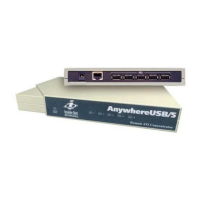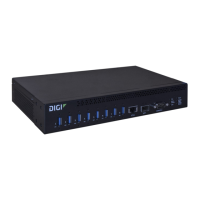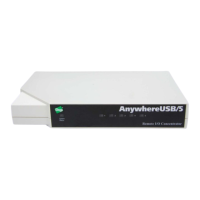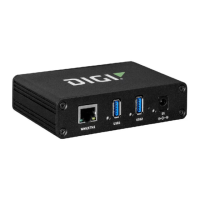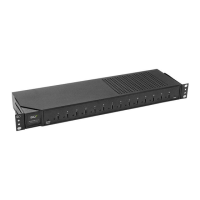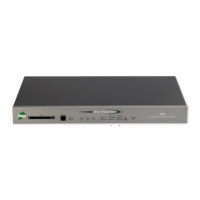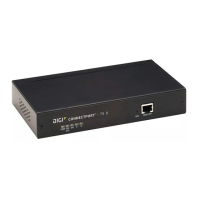Configuration and management Using the command line
AnywhereUSB® Plus User Guide
90
Using the command line
The Digi AnywhereUSB Plus device provides a command-line interface that you can use to configure
the device, display status and statistics, update firmware, and manage device files.
See Command line interface for detailed instructions on using the command line interface and see
Command line reference for information on available commands.
Access the command line interface
You can access the AnywhereUSB Plus command line interface using an SSH connection or a serial
connection. You can use an open-source terminal software, such as PuTTY or TeraTerm, to access the
device through one of these mechanisms.
You can also access the command line interface in the WebUI by using the Terminal, or the Digi
Remote Manager by using the Console.
To access the command line, your device must be configured to allow access, and you must log in as a
user who has been configured for the appropriate access. For further information about configuring
access to these services, see:
n
WebUI: Configure the web administration service
n
SSH: Configure SSHaccess
Log in to the command line interface
Command line
1. Connect to the AnywhereUSB Plus device by using a serial connection, SSH, or the Terminal in
the WebUI or the Console in the Digi Remote Manager. See Access the command line interface
for more information.
n
For serial connections, the default configuration is:
l
115200 baud rate
l
8 data bits
l
no parity
l
1 stop bit
l
no flow control
n
For SSH connections, enter the device's default IPaddress.
2. At the login prompt, enter the username and password of a user with Admin access:
login: admin
Password: **********
The default username is admin. The default unique password for your device is printed on the
device label.
3. Depending on the device configuration, you may be presented with another menu, for
example:
Access selection menu:
